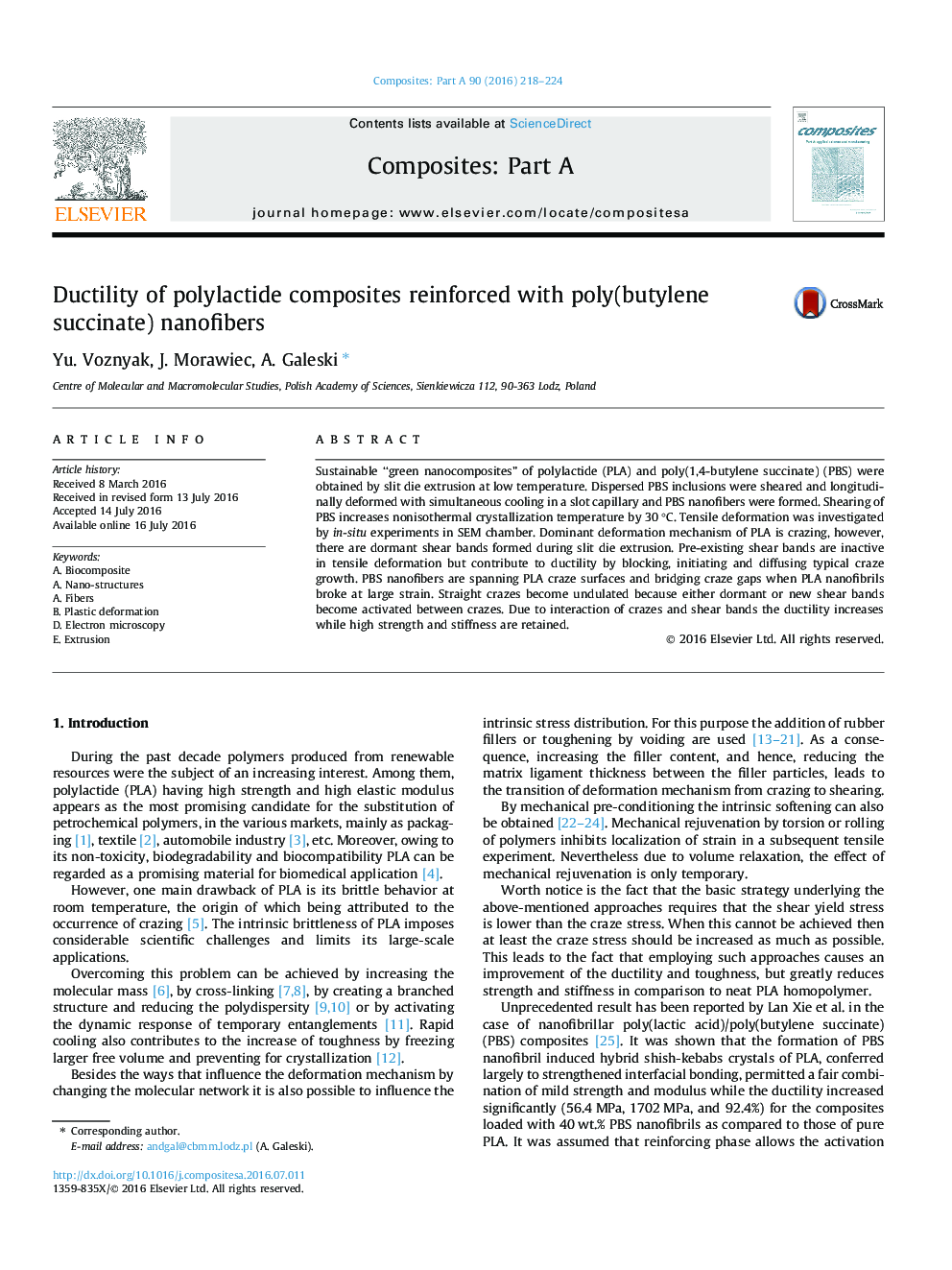| Article ID | Journal | Published Year | Pages | File Type |
|---|---|---|---|---|
| 7890106 | Composites Part A: Applied Science and Manufacturing | 2016 | 7 Pages |
Abstract
Sustainable “green nanocomposites” of polylactide (PLA) and poly(1,4-butylene succinate) (PBS) were obtained by slit die extrusion at low temperature. Dispersed PBS inclusions were sheared and longitudinally deformed with simultaneous cooling in a slot capillary and PBS nanofibers were formed. Shearing of PBS increases nonisothermal crystallization temperature by 30 °C. Tensile deformation was investigated by in-situ experiments in SEM chamber. Dominant deformation mechanism of PLA is crazing, however, there are dormant shear bands formed during slit die extrusion. Pre-existing shear bands are inactive in tensile deformation but contribute to ductility by blocking, initiating and diffusing typical craze growth. PBS nanofibers are spanning PLA craze surfaces and bridging craze gaps when PLA nanofibrils broke at large strain. Straight crazes become undulated because either dormant or new shear bands become activated between crazes. Due to interaction of crazes and shear bands the ductility increases while high strength and stiffness are retained.
Keywords
Related Topics
Physical Sciences and Engineering
Materials Science
Ceramics and Composites
Authors
Yu. Voznyak, J. Morawiec, A. Galeski,
